Disclosure: This article contains affiliate links. We may earn a commission from purchases at no extra cost to you, which helps our travel content.
Paris and I have a complicated relationship. Like many travelers, I initially fell for her grand monuments—the Eiffel Tower's iron elegance, Notre-Dame's Gothic splendor, the Louvre's artistic abundance. But after numerous visits, including a memorable sabbatical teaching English at a small academy near Montmartre, I've discovered that Paris reveals her true soul not in these celebrated landmarks, but in the overlooked corners where history whispers rather than shouts. Sono tokoro ni rekishi ga nemuru—history sleeps in those places, as my father would say. Whether you're planning a romantic weekend or seeking deeper connections with the past, these 12 hidden historical gems offer a different perspective on the City of Light—one where the crowds thin and the authentic Paris emerges from the shadows of its famous monuments.
Medieval Marvels Beyond Notre-Dame
While Notre-Dame undergoes its phoenix-like resurrection, Paris offers other medieval treasures that remain refreshingly tourist-free. My favorite is Saint-Étienne-du-Mont, tucked behind the Panthéon. This church houses the only surviving rood screen in Paris—an intricate stone walkway that seems to float midair, connecting the choir stalls. The delicate spiral staircases leading to this aerial passage remind me of the curved stone steps at Matsumoto Castle back in Japan.
Nearby, the Collège des Bernardins presents a breathtaking medieval hall with soaring vaulted ceilings. Built in 1248 as a Cistercian college, its restoration has preserved the austere beauty that speaks to the scholarly pursuits of medieval Paris. The massive columns rise like stone trees, creating a forest of contemplation that feels worlds away from the city outside.
Perhaps most overlooked is the Cluny Museum's Thermes, where Roman baths transition into medieval collections. The frigidarium's vaulted ceiling has survived since the 2nd century—a remarkable continuity of architecture that spans nearly two millennia. When photographing these spaces, I've found my travel tripod indispensable for capturing the ethereal light that filters through ancient windows without the blur that comes with handheld long exposures.

💡 Pro Tips
- Visit Saint-Étienne-du-Mont around 4pm when the afternoon light illuminates the stained glass most beautifully
- The Collège des Bernardins often hosts concerts—check their schedule for an unforgettable acoustic experience
- Purchase a combined ticket for the Cluny Museum and Roman baths to save on admission fees
Hidden Gardens with Historical Significance
Paris's relationship with nature reveals itself in secret gardens that double as historical treasures. The Jardin des Plantes is known to most visitors, but few venture into the Alpine Garden section, where over 2,000 mountain species grow in a microclimate designed in 1931. As the son of a New Zealand mother who restored historic buildings, I've always appreciated how this garden preserves not just plants but the historical methods of cultivation—a living museum of botanical techniques.
More intimate is the medieval garden behind the Musée de Cluny, recreated with historical accuracy using medieval manuscripts as reference. The geometric beds feature plants used for medicine, cooking, and dyeing textiles during the Middle Ages. Sitting on a stone bench surrounded by herbs that medieval Parisians would have grown creates a time-travel experience more authentic than any guided tour.
My personal favorite remains the Jardin du Petit Palais, a colonnaded oasis that combines classical architecture with thoughtful landscaping. The reflecting pool mirrors the surrounding columns in a way that reminds me of the contemplative gardens I encountered while teaching in Kyoto. I often bring a small pocket sketchbook to capture these peaceful scenes—drawing slows my perception and helps me notice details that photography might miss.
For couples seeking romance away from the crowds, the Rose Garden of Bagatelle in the Bois de Boulogne offers a perfect retreat. Created in 1907, this garden hosts an annual international rose competition. Time your visit for June when the roses reach peak bloom, surrounding you with fragrance and color.
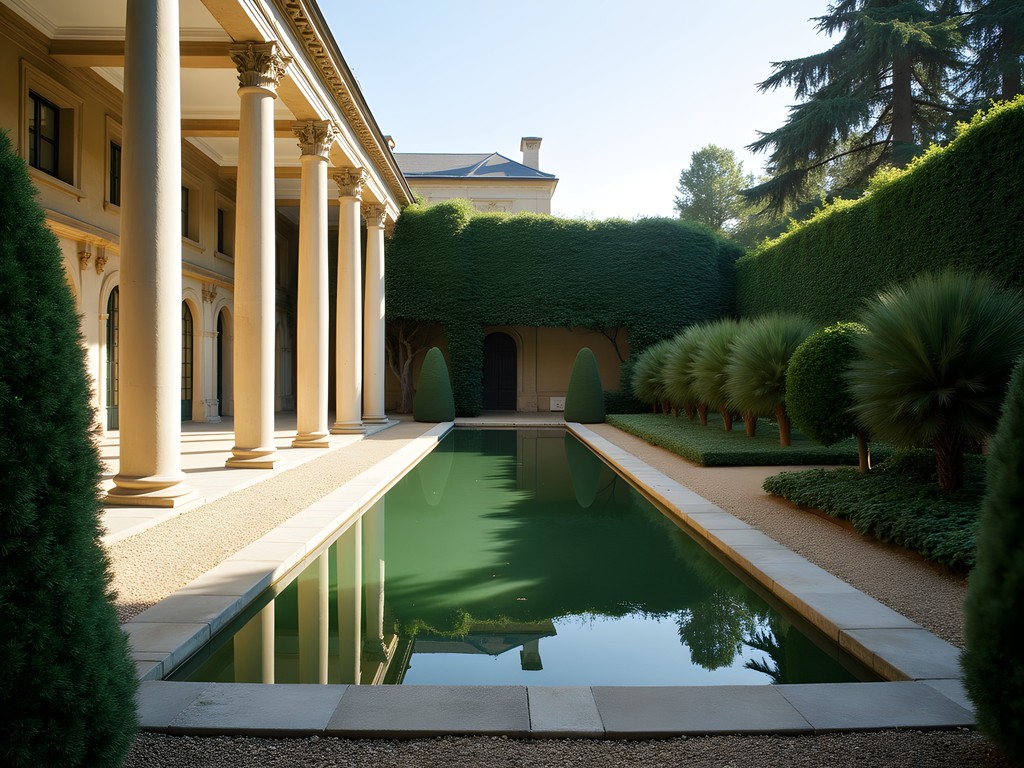
💡 Pro Tips
- Visit the Alpine Garden section of Jardin des Plantes early on weekday mornings to have it almost entirely to yourself
- The medieval garden at Musée de Cluny includes informative plaques explaining the historical uses of each plant
- The Petit Palais garden café serves excellent coffee—perfect for a contemplative break
Passages and Covered Arcades: 19th Century Shopping Innovation
Long before the grand department stores of Boulevard Haussmann, Parisians shopped in covered passages—glass-roofed arcades that protected the fashionable from inclement weather. While Passage des Panoramas and Galerie Vivienne have found their way into guidebooks, others remain delightfully undiscovered.
Passage du Grand-Cerf in the 2nd arrondissement stands three stories tall with an iron and glass roof that bathes the narrow corridor in natural light. The boutiques here showcase independent designers rather than international brands. During my last visit, I found a small atelier creating hand-stitched leather journals that reminded me of those my father used to record his observations about racehorses.
Passage Molière connects the bustling Rue Saint-Martin with Rue Quincampoix and houses the historic Théâtre Molière (now La Maison de la Poésie). The worn stone floors speak to centuries of Parisian feet hurrying through—I often wonder about the conversations these walls have witnessed since the passage opened in 1791.
Most atmospheric is Passage de l'Ancre, the city's narrowest covered passage at just 3 meters wide. Here you'll find Pep's, a tiny umbrella repair shop that has operated since 1855. The colorful umbrellas hanging from the ceiling create a whimsical canopy. I've spent hours wandering these passages with my compact camera, which excels in the challenging lighting conditions of these spaces—bright skylights contrasting with shadowed corners.
These passages aren't merely shopping venues but living museums of 19th-century commercial architecture and the birth of consumer culture. The ornate decorations, mosaic floors, and the gentle buzz of commerce create an atmosphere that department stores can never replicate.

💡 Pro Tips
- Visit passages during weekday mornings when shops are opening and deliveries arrive—you'll see the passages come to life
- Look up! The ceiling details and second-floor windows often reveal architectural details missed by hurried shoppers
- Many passage shops close for lunch—plan your visit before noon or after 2pm
Underground Paris: Forgotten Crypts and Catacombs
Paris exists in layers, with each century building upon the last. While the famous Catacombs attract long queues, other subterranean sites offer equally compelling glimpses into the city's past without the crowds.
The archaeological crypt beneath Notre-Dame's parvis remains one of Paris's best-kept secrets. This underground museum reveals the city's evolution through actual ruins spanning from Roman Lutetia to medieval Paris. Walking among the ancient stone foundations while modern Paris continues above creates a powerful temporal juxtaposition. During my teaching sabbatical, I brought advanced English students here to practice descriptive language—the layered history provides perfect material for vocabulary building.
Beneath Saint-Sulpice church lies another hidden treasure—a partial crypt that houses archaeological remains discovered during renovations. Unlike the organized tourism of the Catacombs, this space retains an authentic sense of discovery. The volunteer guides (often retired archaeology enthusiasts) share their knowledge with infectious passion.
Perhaps most overlooked is the Carrière des Capucins, limestone quarries later converted to mushroom farms beneath the 14th arrondissement. These are separate from the official Catacombs but part of the same network of underground tunnels. Access requires joining a specialized tour led by cataphiles (urban explorers specialized in Paris's underground), but the experience offers an unfiltered connection to the city's geological underpinnings.
Exploring these dimly lit spaces requires reliable illumination. My headlamp has proven invaluable, leaving hands free to steady myself on uneven surfaces while providing consistent light for both navigation and photography. The beam is adjustable from wide flood to focused spotlight, perfect for examining architectural details in dark corners.
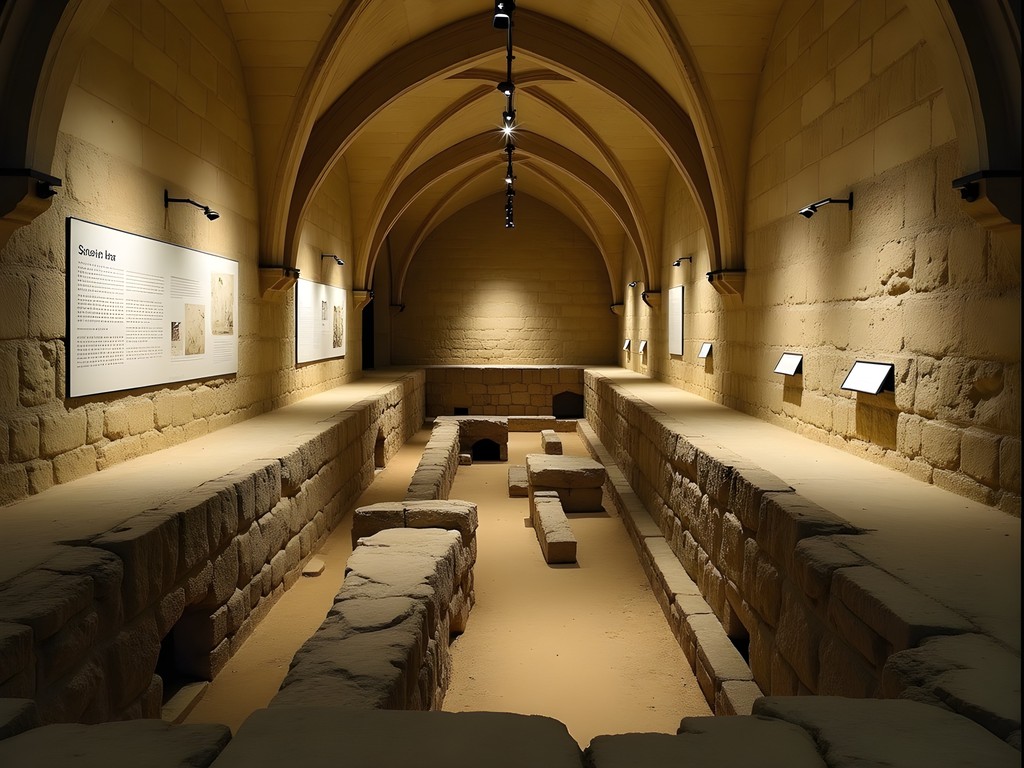
💡 Pro Tips
- Book the archaeological crypt beneath Notre-Dame well in advance—the limited capacity means it sells out quickly
- Wear non-slip shoes with good traction for the sometimes damp and uneven surfaces underground
- Bring a light sweater even in summer—the underground spaces maintain a consistent cool temperature year-round
Forgotten Racetracks and Sporting Heritage
My father's career training racehorses instilled in me a lifelong fascination with equestrian culture, making Paris's overlooked racing heritage particularly meaningful to my travels. While Longchamp Racecourse is well-known, few visitors discover the abandoned Auteuil Hippodrome training tracks hidden within the Bois de Boulogne. Early mornings reveal exercise riders putting thoroughbreds through their paces on these historic grounds—a scene that transports me back to childhood mornings watching my father work with his horses in Auckland.
The Polo de Paris in the Bois de Boulogne represents another facet of equestrian history, operating since 1892. The club maintains an air of exclusivity, but the grounds can be glimpsed from public pathways. During matches (primarily weekends from April to June), the distant thunder of hooves carries through the trees, creating an atmospheric soundtrack to a morning walk.
Perhaps most surprising is the Vélodrome Jacques-Anquetil in the Bois de Vincennes, known locally as 'La Cipale.' This outdoor cycling track hosted the track cycling events for both the 1900 and 1924 Paris Olympics. The concrete grandstands, weathered by a century of Parisian seasons, speak to the city's long sporting heritage. The facility still hosts amateur cycling events, and watching local riders train on this historical track connects present athletic aspirations to those of previous generations.
For those interested in Paris's sporting history, I recommend the small but fascinating Musée National du Sport in the 16th arrondissement. Their collection of historic racing silks and equestrian equipment particularly resonates with my family background.

💡 Pro Tips
- Visit the training tracks at Auteuil between 6-8am to see racehorses exercising
- The Polo de Paris is most active on weekend afternoons during the spring season
- La Cipale velodrome is open to the public when not hosting events—bring a picnic to enjoy in the infield
Literary Paris: Beyond Shakespeare & Company
Paris's literary heritage extends far beyond the famous Shakespeare & Company bookstore. For the literary traveler seeking authentic connections to the city's intellectual history, several overlooked sites offer profound experiences without the Instagram crowds.
The Bibliothèque Mazarine, France's oldest public library, dates to 1643 and maintains its original Baroque interior. Cardinal Mazarin's personal collection forms its core, with over 600,000 works housed in a space that feels frozen in time. The reading room—with its wooden tables worn smooth by centuries of scholarly elbows—welcomes visitors with proper identification. During my sabbatical year, I spent many peaceful afternoons here researching Parisian horse racing history, surrounded by the gentle rustle of turning pages.
In the 5th arrondissement, the overlooked Musée de Montaigne preserves the tower where Michel de Montaigne retreated to write his influential essays. The preserved study contains his famous ceiling beams inscribed with Latin and Greek quotations—a 16th-century version of inspirational wall decals. Standing in this intimate space connects visitors directly to the birth of the personal essay as a literary form.
For those interested in more recent literary history, seek out Le Petit Opportun in Les Halles. This former jazz club hosted readings by the Beat Generation writers during their Parisian sojourns. Though the performance space is gone, the building remains, and a small plaque commemorates its significance. I often bring my pocket notebook here to jot down observations and story ideas, finding inspiration in the creative energy that still seems to linger in the air.
Perhaps most moving is the small garden behind the Hôtel de Lauzun on Île Saint-Louis, where Baudelaire composed portions of 'Les Fleurs du Mal.' While the hotel's interior is rarely accessible, the garden can be glimpsed from certain angles along the riverbank—a secret viewpoint I discovered while practicing yoga in quiet corners of the city.

💡 Pro Tips
- The Bibliothèque Mazarine requires photo ID for entry but is open to researchers and curious visitors alike
- Visit the Montaigne Tower on weekday afternoons when school groups are less common
- When exploring literary sites, bring along excerpts of works written there to read in situ—it creates a powerful connection across time
Final Thoughts
As I sit in the quiet courtyard of the Hôtel de Sens—another overlooked gem housing the Forney art library—I reflect on how these hidden historical sites reveal a Paris beyond the postcard. They offer couples not just Instagram moments but genuine connections to the city's layered past. These overlooked treasures remind us that the most meaningful travel experiences often happen away from the crowds, in places where history whispers its secrets to those patient enough to listen. Rekishi wa shizuka ni kataru—history speaks quietly, as my father would say. Whether you have a weekend or a week, I encourage you to venture beyond the monuments and discover your own hidden Paris. The city has been revealing itself to travelers for centuries, yet somehow always keeps something in reserve—another layer, another story, another secret passage through time. What will your Paris story be?
✨ Key Takeaways
- The most rewarding historical sites in Paris are often those overlooked by guidebooks and tour groups
- Early morning visits offer the most atmospheric experience of hidden Parisian gems
- Look for connections between sites—Paris reveals itself as a network of historical threads rather than isolated monuments
- Keep a journal of your discoveries; the personal connections you make with these places become your unique Paris story
📋 Practical Information
Best Time to Visit
year-round, though spring (April-June) and fall (September-October) offer ideal weather and smaller crowds
Budget Estimate
€30-50 per day for entrance fees and transportation
Recommended Duration
A focused weekend can cover 4-6 sites; a week allows for unhurried exploration
Difficulty Level
Beginner - Most Sites Are Accessible By Public Transportation With Moderate Walking
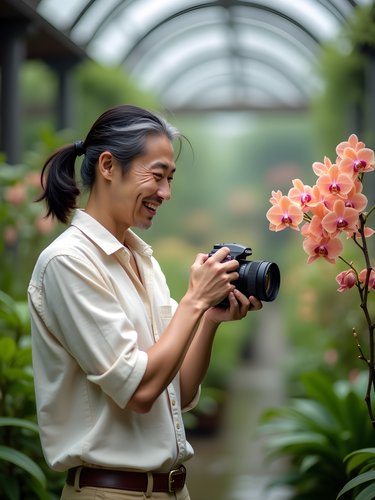

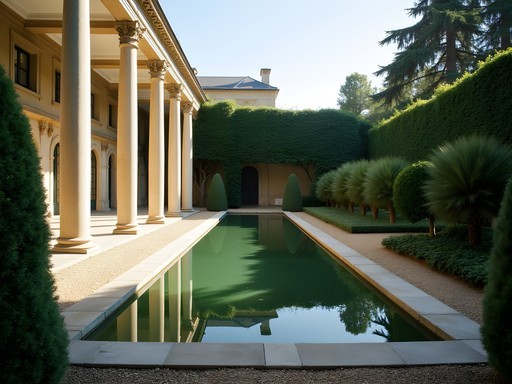
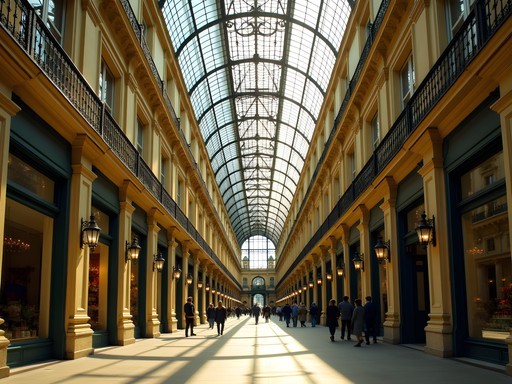
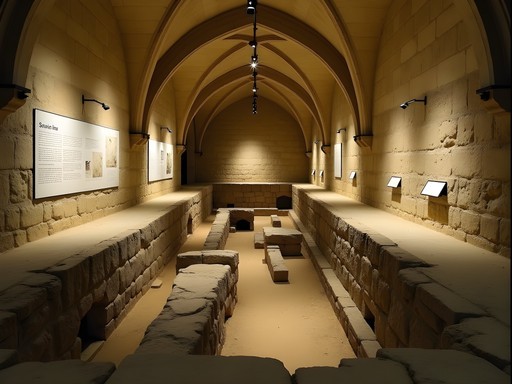




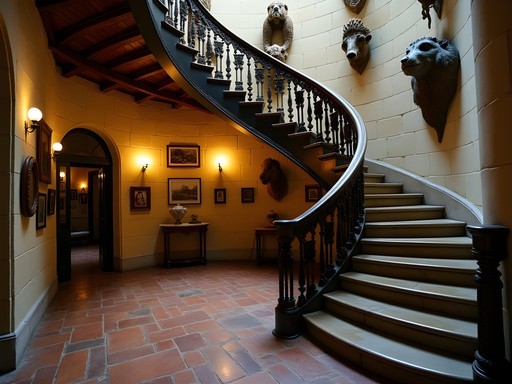

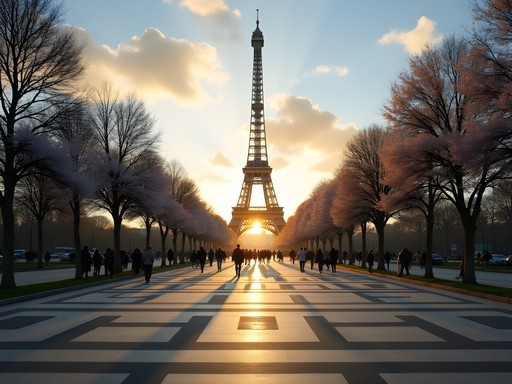





Comments
parisienne_at_heart
As someone who lived in Paris for 6 years, I'm impressed you found spots even I didn't know about! Great research.
moonseeker676
Just got back from Paris and used this blog post as my guide! The medieval section was spot on - we visited Saint-Étienne-du-Mont and it was completely empty compared to Notre-Dame. Those spiral staircases are incredible! We also stumbled upon the Jardin des Plantes which wasn't on our original itinerary but turned out to be a highlight. One tip for anyone visiting the passages: we found a tiny bookshop in Galerie Vivienne where the owner has been there for 40+ years and has amazing stories if you speak a bit of French. I used my pocket phrasebook which helped tremendously with these local interactions. Thanks for inspiring us to look beyond the Eiffel Tower, Hiroshi!
Hunter Thompson
That bookshop sounds amazing! Do you remember the name? Definitely want to check it out next time I'm there.
moonseeker676
I think it was called Librairie Jousseaume! It's tiny and easy to miss, but worth seeking out.
islandace
This is exactly what I needed! Heading to Paris next month for my third visit and wanted to see beyond the usual spots. Which of these hidden gems would you say is most worth visiting if we only have time for 2-3?
Hiroshi Nelson
If you only have time for 2-3, I'd recommend the covered passages (you can see several in one walk), the Saint-Étienne-du-Mont church (right by the Panthéon but often overlooked), and the Hôtel de Sens for something truly off the beaten path. All three give you very different glimpses into Paris's layered history!
islandace
Perfect, adding these to my itinerary! I've walked past the Panthéon twice and never knew about Saint-Étienne-du-Mont. This is why I love travel blogs!
Hunter Thompson
Brilliant piece, Hiroshi! I spent three months wandering Paris last year and completely missed half of these spots. The covered passages were my absolute favorite discoveries though - especially Passage des Panoramas. There's something magical about stepping out of the modern city and into these 19th century time capsules. If anyone's planning to explore these hidden gems, I'd recommend starting early morning when they're practically empty. The light filtering through the glass ceilings around 9am is absolutely stunning for photos. Did you make it to Musée de Cluny during your explorations? Their medieval collection is mind-blowing and often overshadowed by the bigger museums.
moonseeker676
Hunter - did you need to book tickets in advance for these smaller sites? Planning my first Paris trip and trying to figure out logistics!
Hunter Thompson
Most of these hidden spots don't need advance tickets! That's the beauty of them - you can be spontaneous. The passages are free to enter, and places like Hôtel de Sens usually have minimal wait times. Only exception might be specialized crypt tours which can fill up, especially in summer.
moonseeker676
That's so helpful, thanks! Can't wait to explore without a rigid schedule.
freevibes
Just got back from Paris and used this post as my guide - THANK YOU! The Hôtel de Sens was magical and practically empty compared to the madness at the major sites. The medieval architecture is stunning and sitting in that courtyard with a coffee from the nearby café was one of my favorite Paris moments. Also discovered the Arènes de Lutèce (ancient Roman amphitheater) which wasn't even on your list but was incredible - locals were playing pétanque while sitting on 2000-year-old stones! Sometimes the best travel experiences happen when you step away from the bucket list landmarks.
Hiroshi Nelson
So glad you enjoyed these spots! Arènes de Lutèce is fantastic - I actually mentioned it briefly in the Roman Paris section but couldn't give it the full attention it deserves. You're absolutely right about the locals using this ancient space for everyday leisure - that living connection to history is what makes these places so special.
explorefan
This is so helpful! I've seen the main sights on previous trips. Which of these places would be best for someone traveling with kids? My 10-year-old gets bored in regular museums but loves anything spooky or underground!
adventurewalker
Not the author but my kids LOVED the Catacombs! It's a bit macabre with all the skulls but in a cool way that fascinated my 9 and 12 year olds. Just book ahead online - the line can be brutal.
explorefan
Perfect, thanks! Skulls are definitely his thing right now lol
Adam Nichols
Excellent curation, Hiroshi. As someone who's written extensively about European historical sites, I find Paris particularly fascinating for its layers of history beyond the iconic monuments. I'd add La Petite Ceinture to this list - the abandoned railway circling Paris offers a fascinating glimpse into 19th century industrial development. The section in the 16th arrondissement has been beautifully repurposed as a green corridor. For serious history enthusiasts, I recommend exploring with Paris history guide which maps many of these hidden gems with historical context. The chapter on medieval Paris is particularly enlightening regarding sites like Saint-Séverin.
freevibes
La Petite Ceinture is amazing! Found it by accident on my last trip. Felt like discovering a secret garden in the middle of the city.
adventurewalker
Love this list! The Musée de Cluny is such an underrated gem. Those medieval tapestries blew my mind.
backpacknomad
Yes! Finally someone talking about the hidden side of Paris! I stumbled upon the Passage des Panoramas last year and it was like stepping back in time. Those 19th century covered arcades are incredible - the antique shops, the old-school cafes, the original glass ceilings. So much more interesting than fighting crowds at the Eiffel Tower. Did you check out Passage Jouffroy too? The wax museum there is delightfully weird!
explorefan
Are these passages easy to find? Going to Paris for the first time next month and would love to see the non-touristy stuff!
backpacknomad
Super easy! Most are right in the 2nd arrondissement. Just Google 'Paris covered passages' and they'll pop up on maps. Passage des Panoramas is my fave - entrance on Boulevard Montmartre.
explorelife
Just booked tickets to Paris for Christmas! Can't wait to explore these hidden spots when it's all decorated for the holidays!
skyone
The passages are magical at Christmas! All decorated with tiny lights. Definitely check those out.
Venture X
Premium card with 2X miles, $300 travel credit, Priority Pass